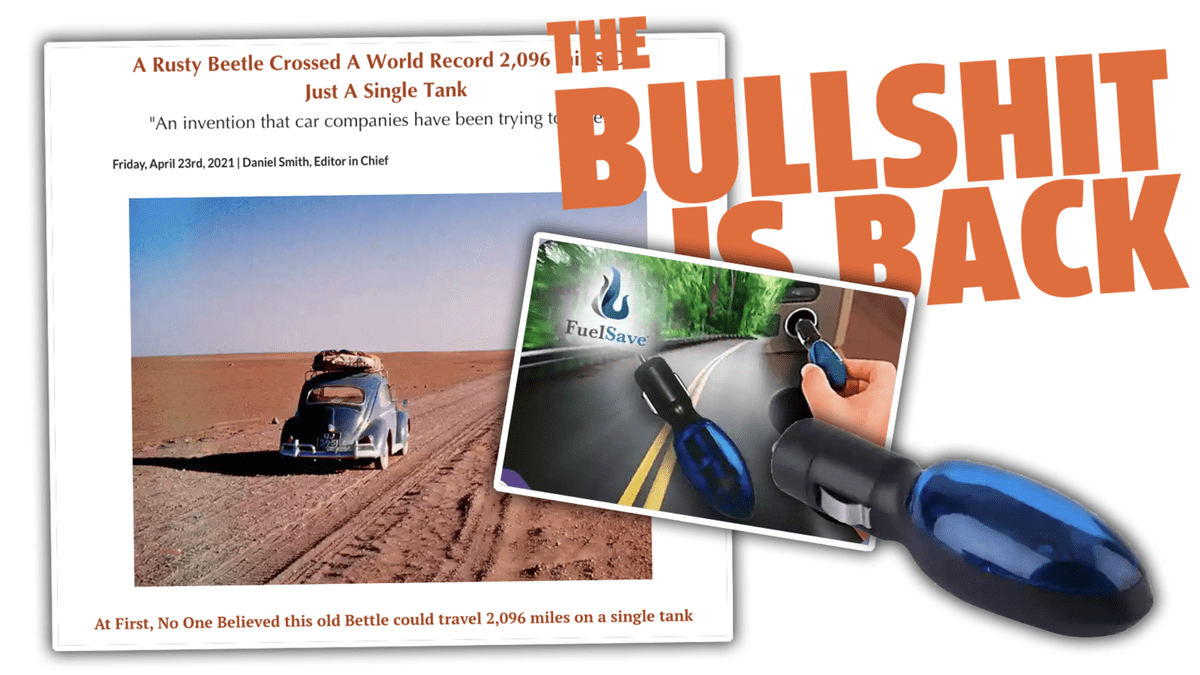These Gas-Saving Devices Are Complete Scams

Aqua Tune sells units for everything from motorcycles to industrial machinery, boats and aircraft. It’s not just fuel savings you experience with this piece of crap, oh no. Your engine will live longer, having been steam cleaned by the Aqua Tune, which lowers engine operating temperature by 25 degrees. Aqua Tune and other products like it have been around for years and is, and has been, a complete scam that whole time, from Popular Mechanics:
The modern-day device we tested, the Aqua Tune, uses manifold vacuum, not a calibrated pump, to dribble water into the intake. They claim the ultrasonic chamber inside the Aqua Tune unit cracks the hydrogen and oxygen apart, making your car burn the water. (No one else seems to know how to disassociate hydrogen from oxygen ultrasonically.) The Aqua Tune we tested reduced engine power and increased fuel consumption, as well as making the truck run hot.
Not to demean the concept of water/alcohol injection, which is a well-understood aircraft technology and can provide a safe power boost on highly boosted engines. But a simple vacuum-operated (although not exactly inexpensive) system has no way to add water when it’s needed—during wide-open-throttle operation—since there’s no manifold vacuum then to pull water in. And there’s little advantage to adding water when there is plenty of manifold vacuum, at part-throttle.
The absolute cojones to charge thousands of dollars for something that looks like L. Ron Hubbard’s first attempt at an E-Meter.
Think of all these products like this: Automakers are always under the regulatory gun, trying to squeeze better milage and performance out of cars. If it was as simple as putting a couple little wings on the roof, or a magnet on the fuel line, they’d likely do that already. Save your money and prevent another useless piece of plastic from entering the oceans.



